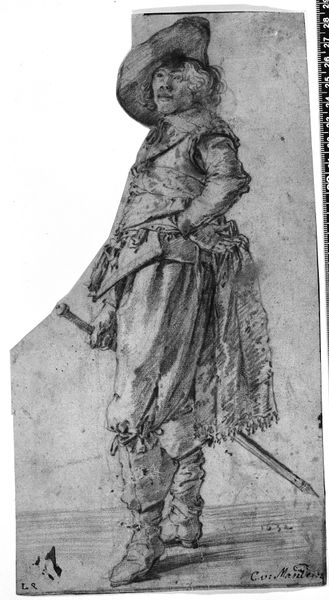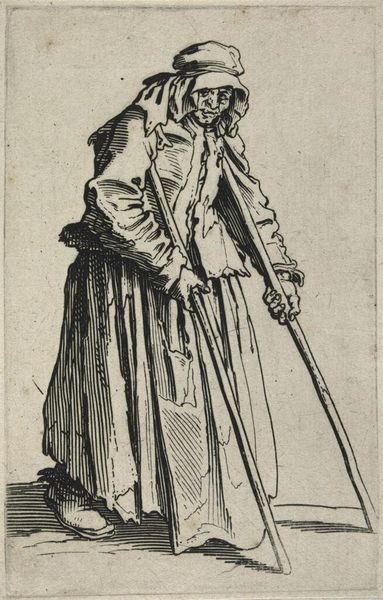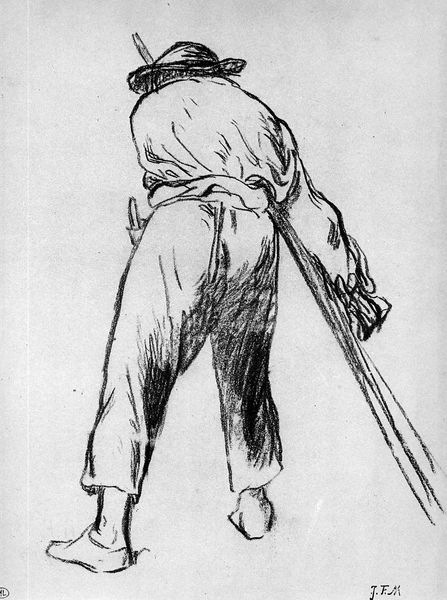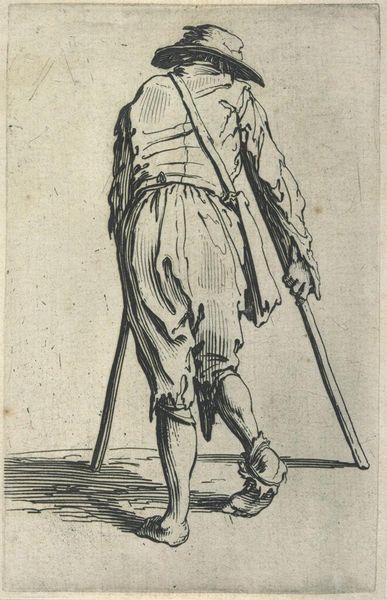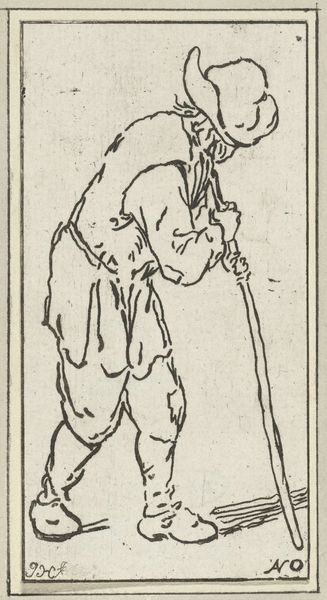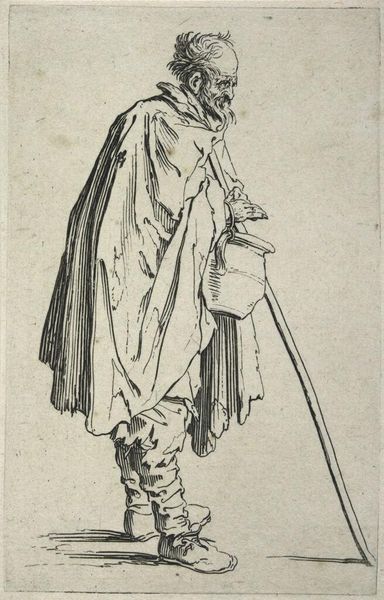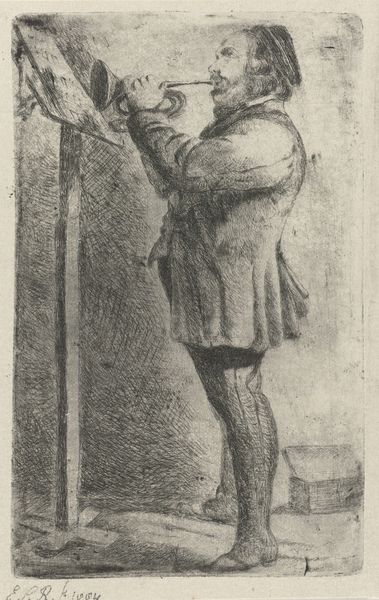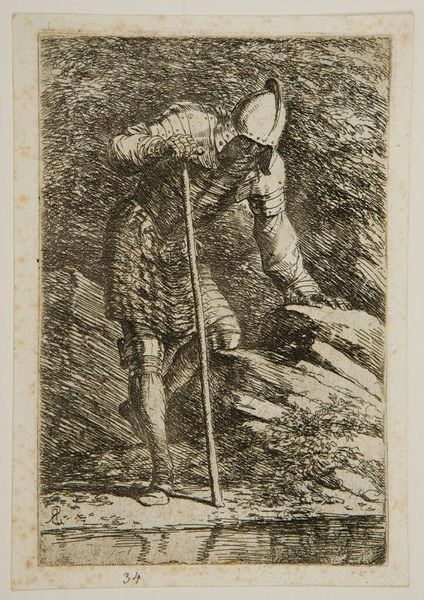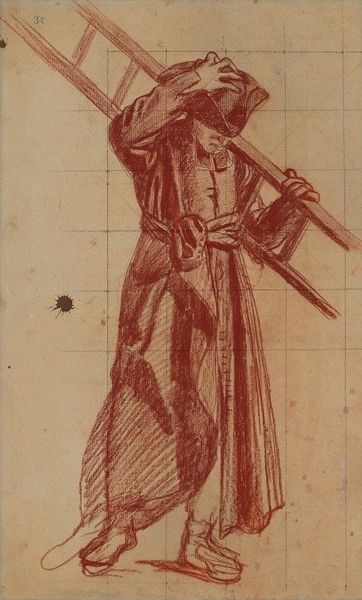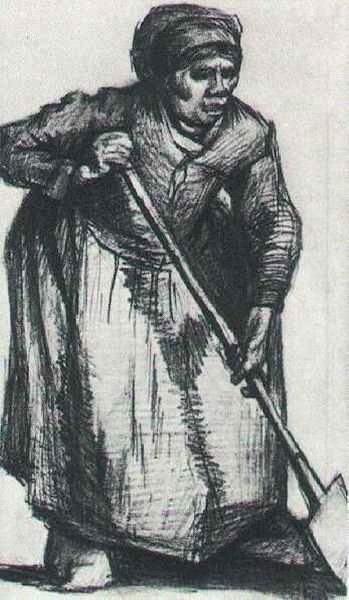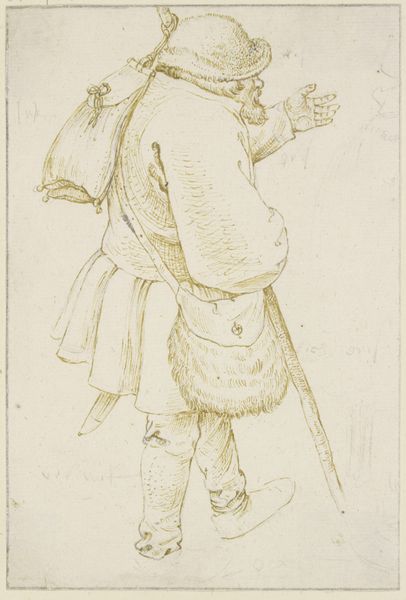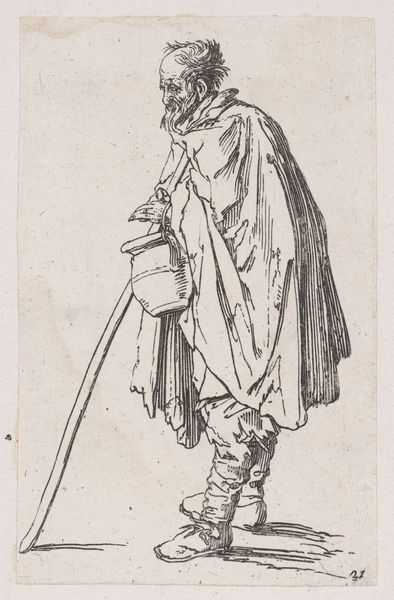
drawing, pencil
#
portrait
#
drawing
#
dutch-golden-age
#
pencil
#
genre-painting
Copyright: Public domain
This drawing, made by Hendrick Avercamp around the early 17th century, depicts a man with a "kolfstok," or golf club. The golf club, a seemingly simple object, bears a lineage stretching far back into the collective memory of humankind. Consider, the shepherd’s crook, an ancient symbol of guidance and authority, or even the scepter, a more formal emblem of power. Avercamp’s golf club, while more secular, echoes these earlier forms, representing control, direction, and a connection to the earth. We see similar stances and grips in depictions of hunters wielding spears from paleolithic art through medieval hunting scenes. The act of wielding a stick, be it for sport or survival, taps into a deep, almost primal part of our psyche. It speaks to our innate desire to exert influence over our environment. This seemingly ordinary scene becomes a mirror reflecting our timeless pursuit of purpose and mastery over the material world. The image resonates because it touches upon something fundamental within us. A memory of gestures passed down. The club is more than wood; it is an echo across the ages.
Comments
No comments
Be the first to comment and join the conversation on the ultimate creative platform.
